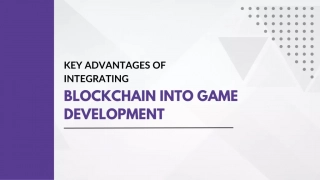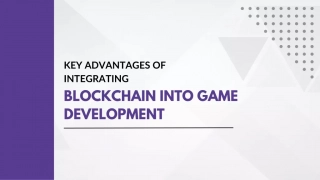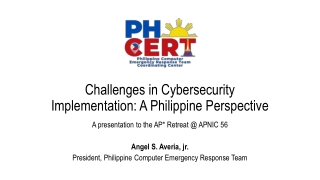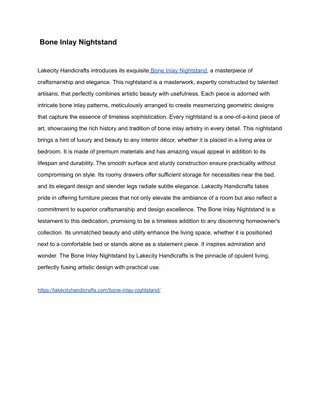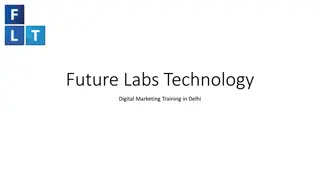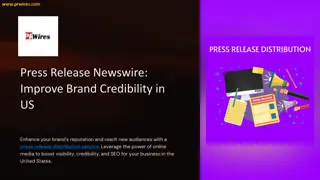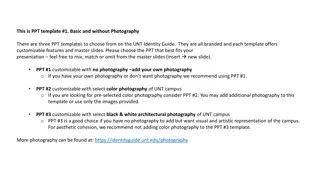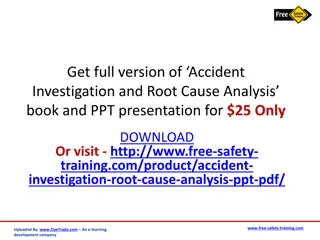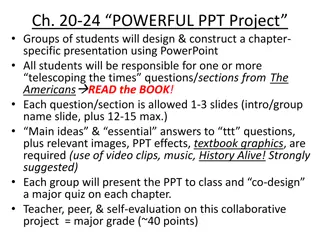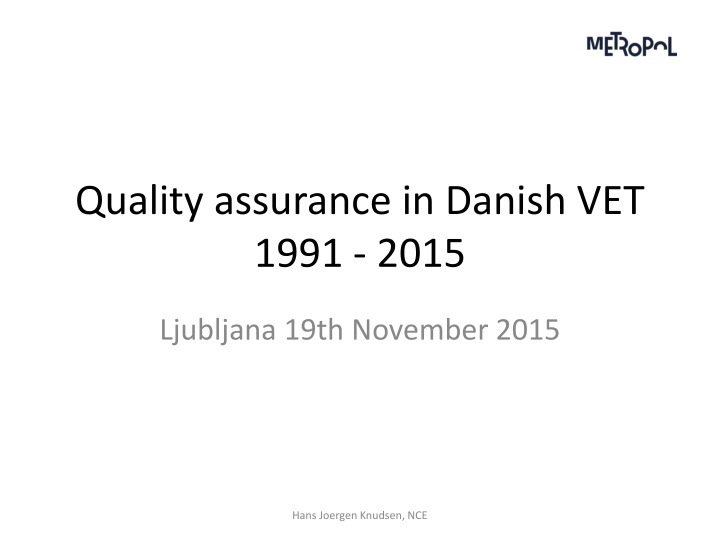
Danish VET Quality Assurance and Legislative Overview 1991-2015
Explore the journey of quality assurance in Danish VET from 1991 to 2015, including key elements, significant changes, legislation, and management structures. Learn about Hans Joergen Knudsen's role in school development projects, knowledge sharing, and strategic competence development within the Danish VET system.
Download Presentation

Please find below an Image/Link to download the presentation.
The content on the website is provided AS IS for your information and personal use only. It may not be sold, licensed, or shared on other websites without obtaining consent from the author. If you encounter any issues during the download, it is possible that the publisher has removed the file from their server.
You are allowed to download the files provided on this website for personal or commercial use, subject to the condition that they are used lawfully. All files are the property of their respective owners.
The content on the website is provided AS IS for your information and personal use only. It may not be sold, licensed, or shared on other websites without obtaining consent from the author.
E N D
Presentation Transcript
Quality assurance in Danish VET 1991 - 2015 Ljubljana 19th November 2015 Hans Joergen Knudsen, NCE
Who am I? Name: Hans Joergen KNUDSEN Chief Consultant Metropolitan University College Copenhagen, Denmark School development projects Knowledge sharing Strategic competence development Educational design Hans Joergen Knudsen, NCE
The basic elements of Danish VET Danish VET Dual system Alternating programmes Self- Social Partnership governing institutions Hans Joergen Knudsen, NCE
Significant changes related to quality 1991 A new VET reform very autonomous schools 1993 - New government (Social democratic) less autonomy 1996 - Q-90 Quality-systems required (inspired by EU/NPM) 1997 Quality is for the schools to do but must be documented 2000 Lisbon strategy EU influence (education in focus) 2001 New government again (liberal) 2002 Open Method of Coordination more EU-influence 2011 New government (SFR) 2012 Government takes the lead in terms of quality 2013 New rules for autonomy, leadership and quality and a new VET-reform (2014) Hans Joergen Knudsen, NCE 2015 New government again liberal)
The legislation 1991 1. Executive order on Vocational Education and Training (the education) The provision and how it is related to: The dual system The Partnership model 2. Executive order on Vocational institutions (the institutions): Institutions are approved as such by MoE They are self governing institutions Under a goal and framework system Board of governors responsible for almost everything and accountable to MoE Director responsible for daily operations Hans Joergen Knudsen, NCE
Overall management of the VET school The school board: Overall responsible for economy, provision, buildings and equipment, staff, approves the budget and is accountable to the MoE 6 14 members, majority from outside the school, 1-2 from the region and the municipality, 1-2 members are representing the staff, and 1-2 are representing the students, trade unions and employers organisations are equally represented and will normally be chairing the meetings. The director participates in the meetings but without the right to vote. The school board selects and appoints the director, and can also fire him/her again The director: Responsible for daily operations, provides the board with information, suggestions about the future budget and future strategy. The director appoints (or is responsible for the appointment) of all other staff- members approved by the board. Accountable to the board Hans Joergen Knudsen, NCE
The taximeter principle Schools are paid per student (teaching taximeter) Per square meter (building) For being a provider (per institution) For that amount of money they have to pay all costs: Salaries Building maintenance New investments in equipment, machinery and buildings All administrative costs ICT Canteens Marketing HR costs and quality assurance costs Etc. Hans Joergen Knudsen, NCE
The general picture after 1991 Schools were made autonomous and MoE should not interfere in what schools could handle themselves Leaders should not tell teacher (the professionals) what to do or how to do it. They were the experts Schools and leaders were responsible for all economy, equipment, buildings etc. Hans Joergen Knudsen, NCE
Expectations to the VET schools EU MoE Competitors Customers Market Partners Hans Joergen Knudsen, NCE
Political objectives for VET education Effective in terms of ensuring the employability and actually lead to jobs. (Involving the social partners and other relevant stakeholders a key to adaptability of the VET programmes.) Attractive (flexible system on a level with the more academically- oriented education programmes at upper secondary level). For everybody (inclusion also for immigrants and weak learners) Adaptable (developing new solutions to the challenges of a globalising world - IT, the services and the entertainment and leisure industry etc.) Based on that, concrete objectives are set up like 95% of all students should have a formal educational competence by 2015 VET-schools must work accordingly Hans Joergen Knudsen, NCE
Major changes in legislation and the quality issue 1991 2013/2014 1996/1997 Q90 Core products Pedagogical leadership Quality control Education Institutions School- autonomy Quality assurance systems EFQM/Excellence Self-governing institutions Goal and framework system Market orientation Buildings, machinery given to the schools School-boards accountable to the ministry Quality based on self-evaluation Schools decided what to work with and how to it Quality is brought close to the core-production MoE decides what to be focused on Change from general systems to the more concrete requirements Hans Joergen Knudsen, NCE
From Q90 to the Excellence model (EFQM) Results Enablers People results People Policy and strategy Key Customer results Leadership Processes perfomance results Partnerships and resources Society results Hans Joergen Knudsen, NCE
Questions to the outcome Out- come Input Output Activity ? Marks Economy Satisfaction and loyalty Papers, and resources Teaching and learning Hans Joergen Knudsen, NCE
The Excellence model (EFQM) Results Enablers People results People Teacher Policy and strategy Key Customer results Leadership Processes perfomance results Student Stuff Parnerships and resources Society results Hans Joergen Knudsen, NCE
First step quality assurance School-director Quality- assuran ce Paperwork Leader 1 Leader 2 Leader 3 Leader 3 Administrative leadership For the school and to be documented on the web-site And ? Hans Joergen Knudsen, NCE
Next step quality assurance School-director Quality- assuran ce Paperwork Leader 1 Leader 2 Leader 3 Leader 3 For the school and to be documented on the web-site Administrative leadership Satisfaction-surveys could be used in discussions between leaders and the teachers Knowledge sharing bench- learning Hans Joergen Knudsen, NCE
MoE takes the lead Out- come Input Output Activity Marks? Economy? Satisfaction and Loyalty Paper, and resources Teaching and learning Pedagogical Leadership IT Diff instruction Theory-practice Feedback Pedagogical- didactical strategy Competence development Coordinated efforts - same system More students Reduced dropout Learning Hans Joergen Knudsen, NCE
A new VET-reform (2014), and new objectives More students must choose VET directly after elementary school More students must complete VET VET must challenge all students in order to make them as good as the can be Confidence in and well-being at the vocational training institutions must be strengthened So what can be done? Hans Joergen Knudsen, NCE
A new Ministry of Education Conferences learning from schools New quality procedures Civil servants Research projects on important issues Development projects producing emperical data Information and knowledge Read books and visit other countries Pedagogical experts New initiatives for improvement of VET Learning consultants European experience and agreements Hans Joergen Knudsen, NCE
The Excellence model Action plans for enhanced completion Differentiated instruction Theory-practise ICT Results Enablers Competence development More students Start People results People Pedagogical leadership Teacher More students complete Policy and strategy Customer results Leadership Processes Results Student Stuff Didactical- pedagogical strategy All students learn as much as they can Parnerships and resources Society results Confidence well-being Hans Joergen Knudsen, NCE



